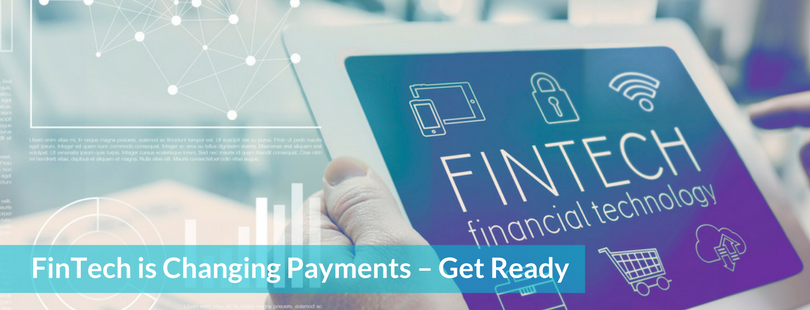
FinTech is here and it’s on an upwards trajectory. Not only is FinTech changing payments, it has already changed payments. In fact, the technologies that define FinTech have made it possible for CNP merchants to exist and prosper.
It is hard to know which came first, the technology or the demand. Regardless, FinTech is allowing merchants to sell online to anyone anywhere in the world—a true game-changer.
Fintech is in a state of constant evolution; what started with real-time payments has now morphed into mobile wallets, P2P payments, digital currency, and omnichannel payments. These new payment models have placed new demands on merchants, financial institutions, and customers.
What the Customer Wants
At first glance, it appears that customers are the ones driving the trend towards advancing technology in payments. Today’s customers demand the freedom to buy through any device at any time. However, this new level of expectation is tied to the technology innovators who put their solutions in the hands of customers.
FinTech innovators recognized early on that to attract adoption and commitment, they needed to engage customers and prove that these new technologies can make their lives better. Customers weren’t asking for real-time payments options such as PayPal or Stripe; they did not try hovering their watch over a POS terminal in hopes of a transaction, nor did they ask to email money to their friends.
Thanks to savvy marketing and ease-of-use, these payment methods have become the standards in consumer use. Having a PayPal account or watch that can access bank accounts in real-time or emailing money are no longer novelties.
This has given rise to customer expectations for better mobile and CNP payment options. Seamless experiences across digital devices, secure passwords storage, instant account debiting, and the option for consumers to pay however they want—by credit card, debit card, email transfer, PayPal, text, Bitcoin—are forcing merchants to reassess their payments infrastructure.
Merchants Must Deliver on FinTech
Just as the Internet has changed the face of sales, FinTech has done the same for payments. Merchants can no longer assume that their customers will pay with a bank or credit card. Now, it’s up to merchants to be one step ahead of customers and prepare to accept a variety of payment methods.
These new dynamics in payments have highlighted a flaw in the traditional payment landscape: the ability to change quickly and efficiently. The FinTech drive is slowly correcting this inherent payments flaw. As merchants are forced to support new payment options, they are forcing financial institutions to change and update their technology to support these new customer payment demands.
Inclined toward convenience, customers want as many payment options as possible. Savvy merchants are poised to deliver on these options and are investing in payment solutions to enable change. Financial institutions accept this in order to stay relevant, as they must meet the demands of their customers (i.e. merchants).
This change does bring with it one critical problem: security threats. And this is where merchants must be proactive. Remember, customers not only demand the latest in payments technology but they also expect guarantees that their data is secure. This is particularly the case with the millennial generation who, of all buying groups, are more skeptical of FinTech security.
Payments Solutions Must Be Positioned to Evolve
Merchants must deliver on two fronts: the end-user experience and the back-end payments solution. These both hinge on secure data and fraud prevention. Without these cornerstones of payments, the merchant loses and the customer never returns.
Along with supporting an end-user experience that is sleek, fast, and option-rich, merchants should consider incorporating the latest technologies in fraud prevention and security.
- Geolocation: Verify the location of the customer with the actual location of the active card.
- Biometric analysis: Compare the customer’s fingerprint with that of the cardholder.
- Address verification service: The issuer compares the addresses provided during the transaction.
- CVV: Additional credit card security code required during the final payment authorization.
- IP intelligence: Deep analysis of the IP address used for the transaction to monitor possible risks associated with the location of the transaction.
- Device intelligence: Deep packet inspection and proxy piercing capabilities to expose specific identifying details of the connected device submitting the transaction.
- 3 Domain Secure:A cardholder authentication protocol for e-commerce transactions and CNP purchases.
- Merchant co-op: New orders are compared against millions of orders taken by other merchants contributing in-network and scrubbed for fraud risk.
- SSL: Secure encrypted communication protocols between devices and payment solutions.
- Tokenization: Replaces sensitive account and card information with a non-sensitive token or placeholder.
Merchants who can easily enable the latest in payments security solutions are better poised to be successful adopters of FinTech payment options. Without a proven secure payments infrastructure that actively analyzes customer data—interpreting digital signals and relaying information in real-time—merchants cannot deliver on new payment options.
Merchants who attempt to accept the latest in payments without a secure payments solution may quickly find themselves coming out on the losing end.
The first step in preparing for advances in FinTech lies with your payments solution. You must use a payments solution that evolves with changes in technology and fraud prevention. Your payments solution also needs to provide customer data analysis, so you can anticipate rather than react to new payment options.
You can learn more about Verifi solutions such as Intelligence Suite and how it supports your adoption of FinTech tools. Contact us with your questions—we’re happy to help.